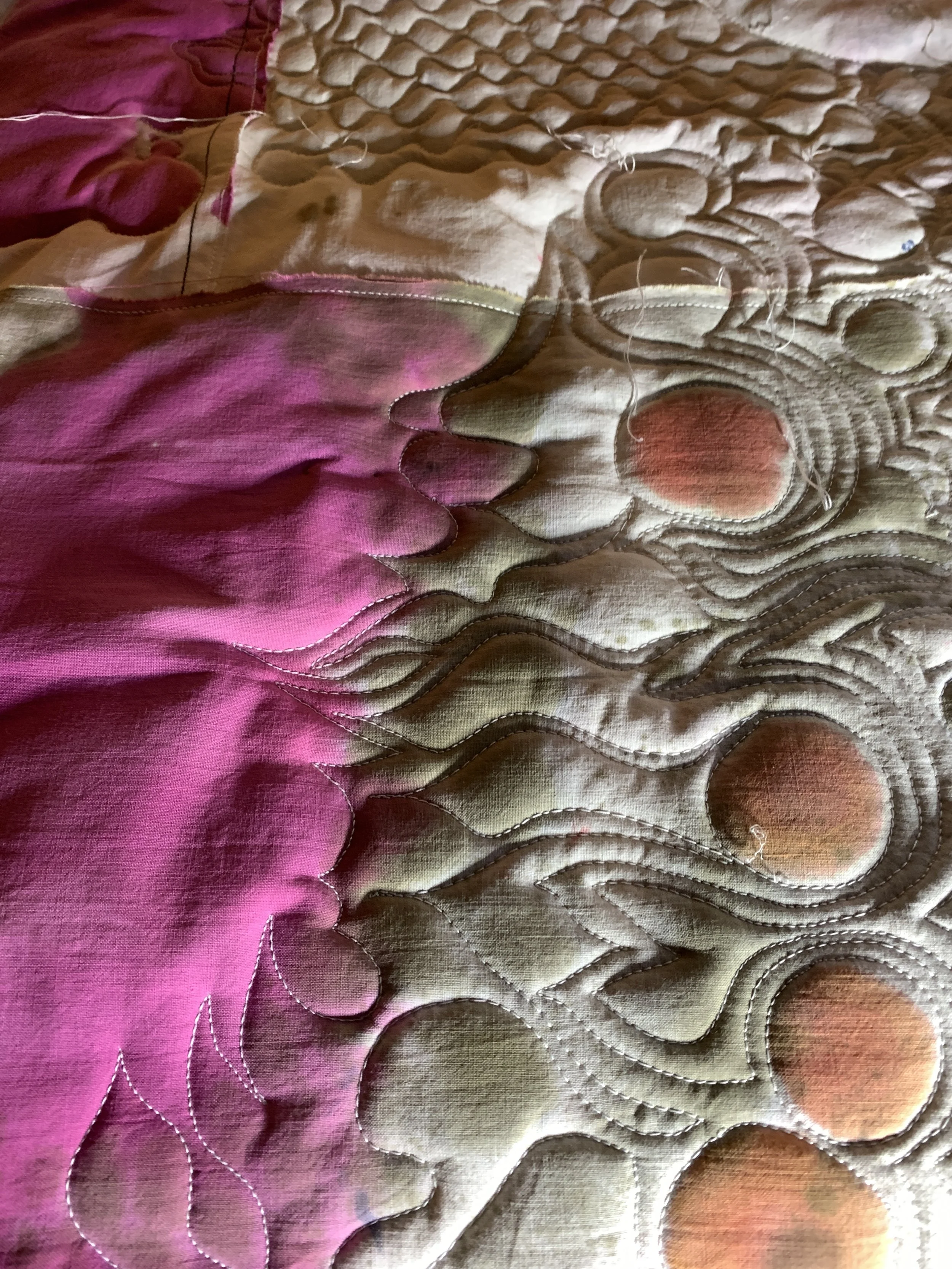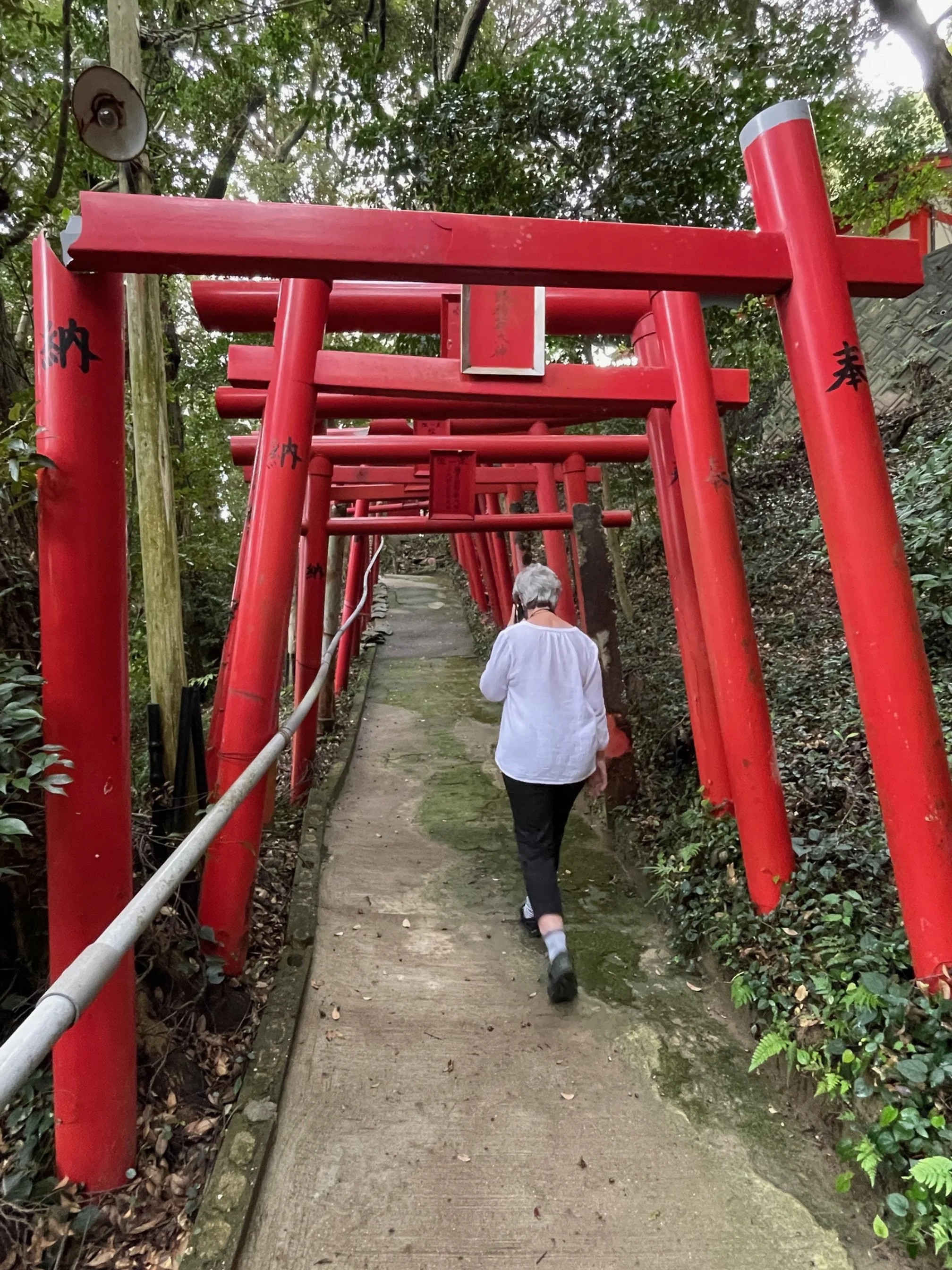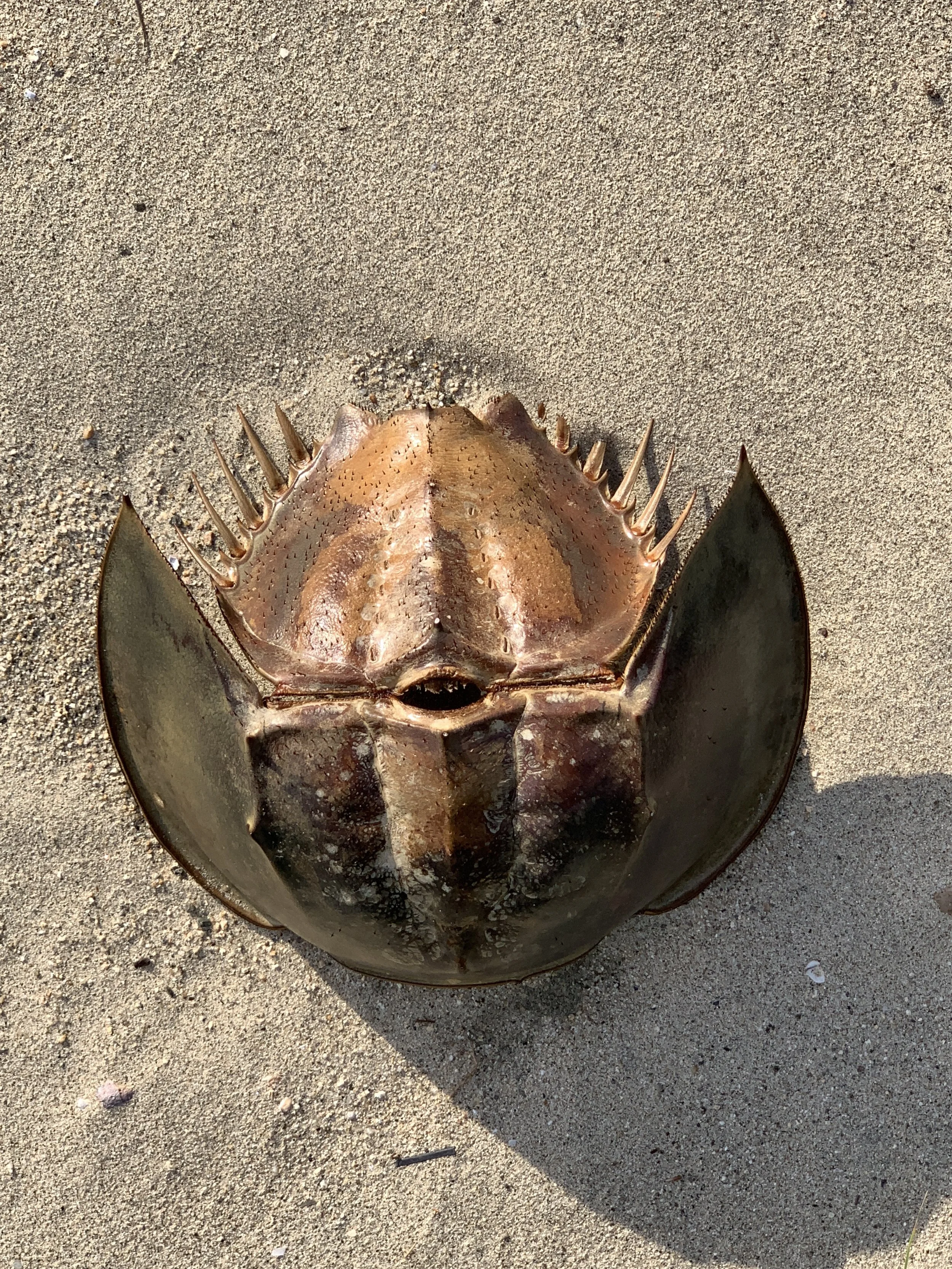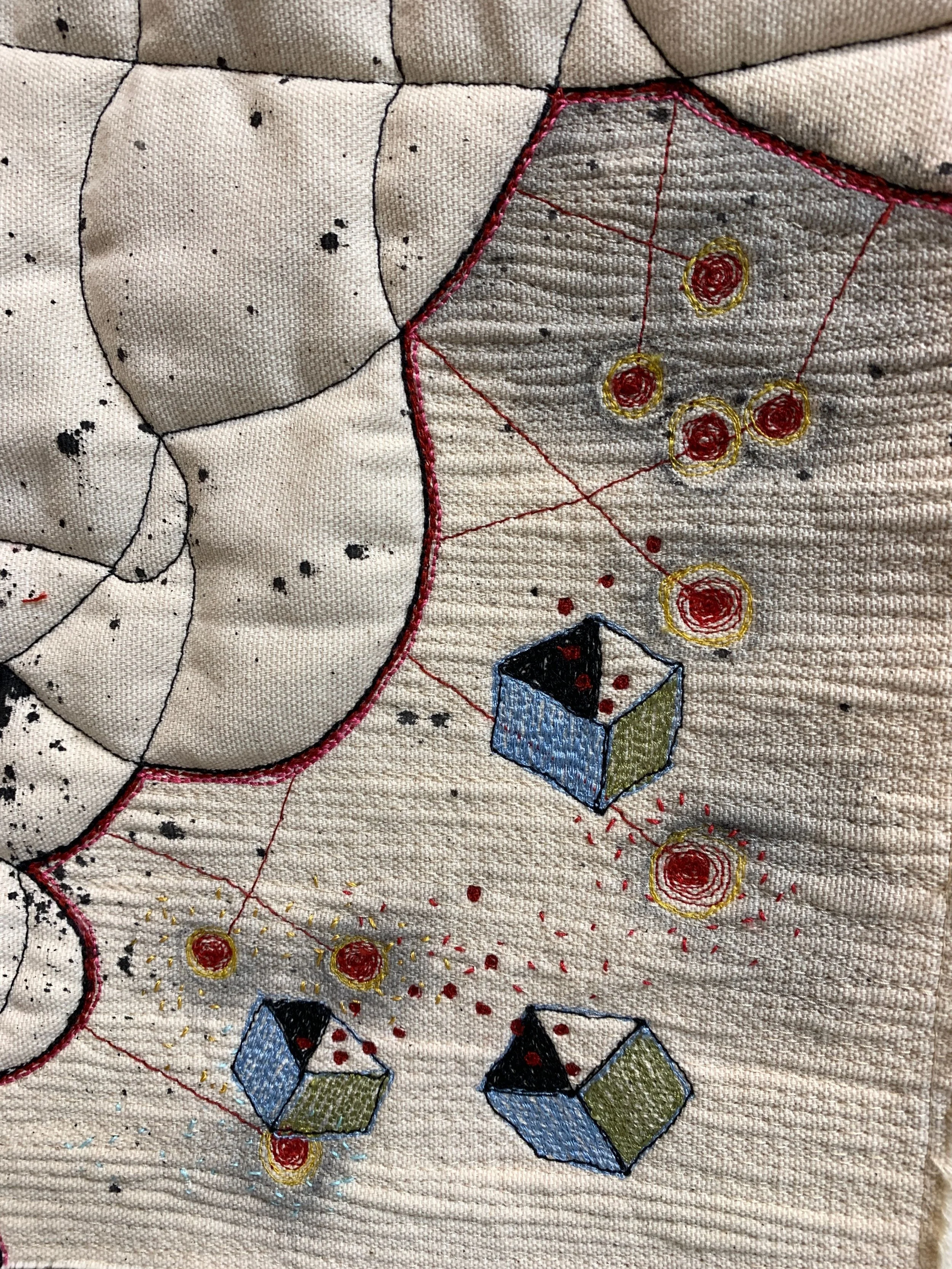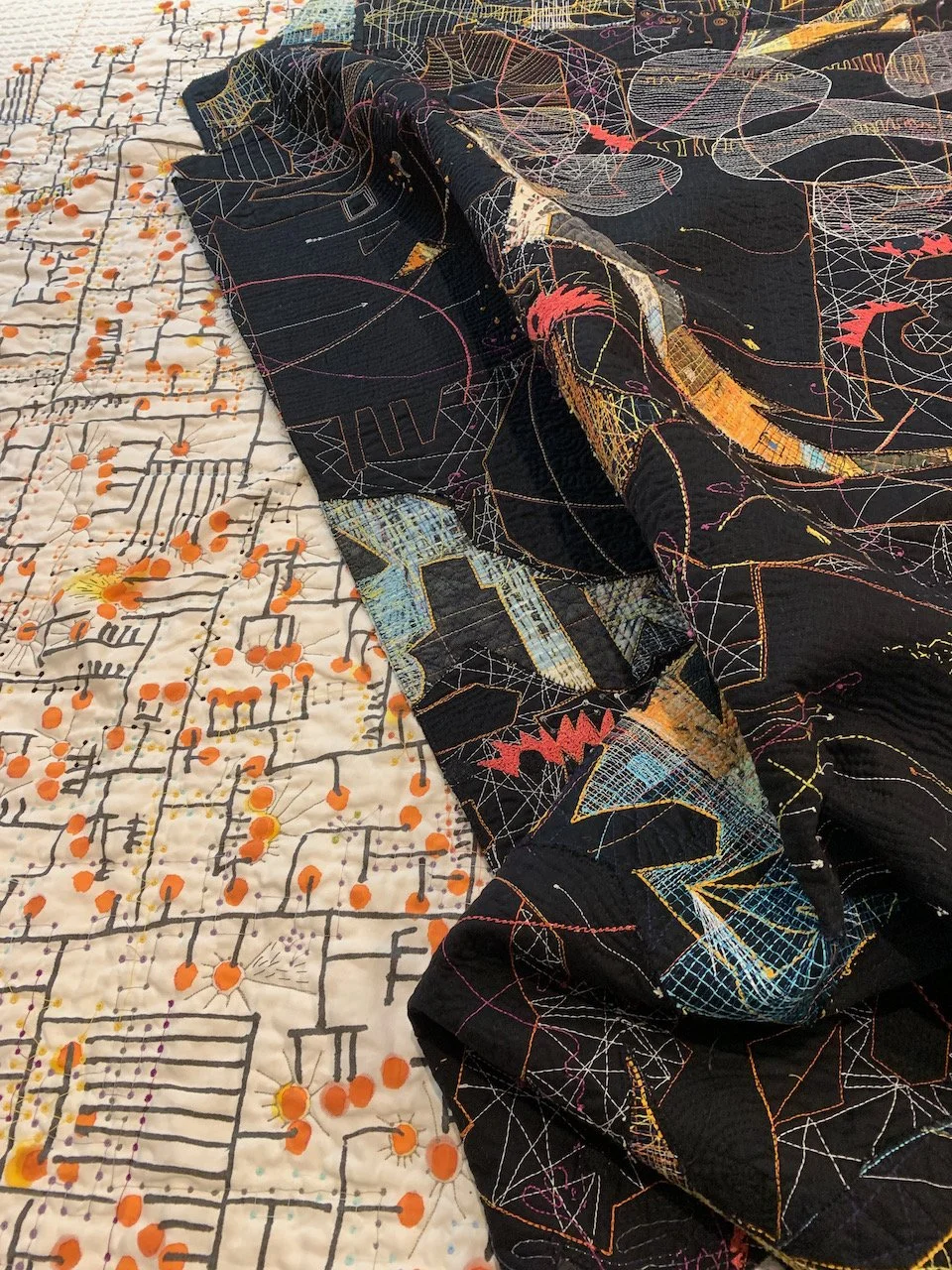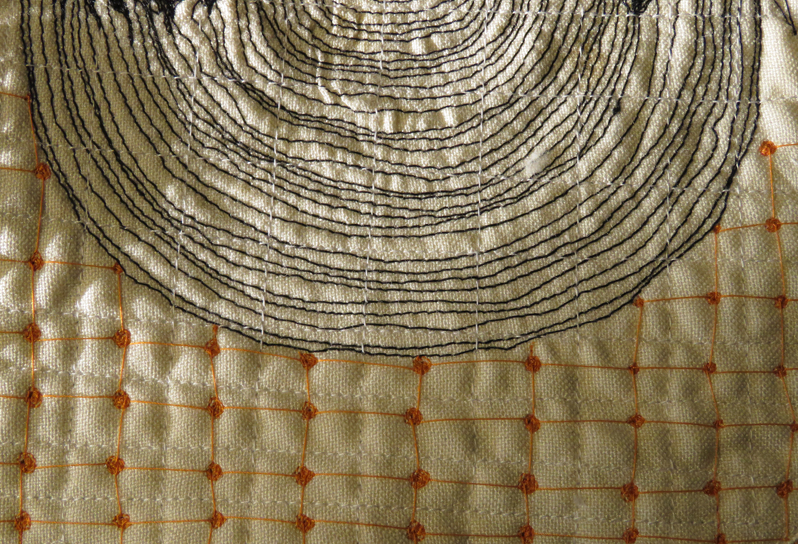Distractions, responsibilities and confusion have set my studio in stasis. The design wall has a big blank hole on it. About two weeks ago I took out one of those precious pieces of cloth I have collected and pinned it to the board. It is a piece of hand woven linen. With slubs and weight and presence. I found it in a junk store in Germany and instantly knew that I had to have this cloth in my work.
Problem is the preciousness. How to deconstruct, define, deepen (and defile?) the cloth with my visions? Those little hand stitches that join the two panels down the center of the cloth have to stay in honor of the weaver. The slubs provide their own layer of texture and depth. Stitching, marking and moving beyond the original cloth challenges my resolve.
Usually when I come to this stage in a work I start with a clear concept. A couple of the ideas in my sketch stash could work with this cloth. But which one? Which is worthy? Why?
For now I will experiment on smaller cloth. Stained and tattered placemats with scalloped edges present a pallet without risk. Without gravitas. The big blank wall will have to wait. I feel the breath of it whispering.






